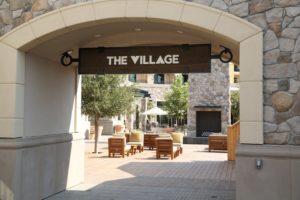
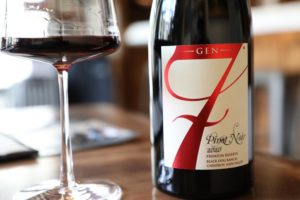
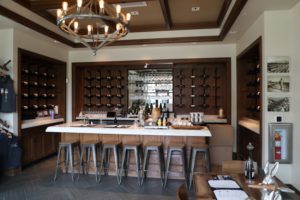 GEN 7 Wines is deeply rooted in the fabric of California’s wine industry. GEN 7 Wines was founded in 2008 producing their first vintage that year by Tim & Susanné Bacino. The name GEN 7 is in homage to their daughter Gabriella, the 7th generation of their family in the wine business. Tim’s family winemaking heritage dates back to 1852 in California when his great great great great uncle Theophile Vaché established one of the earliest vineyards in San Benito County.
GEN 7 Wines is deeply rooted in the fabric of California’s wine industry. GEN 7 Wines was founded in 2008 producing their first vintage that year by Tim & Susanné Bacino. The name GEN 7 is in homage to their daughter Gabriella, the 7th generation of their family in the wine business. Tim’s family winemaking heritage dates back to 1852 in California when his great great great great uncle Theophile Vaché established one of the earliest vineyards in San Benito County.
When Tim was 38 he had a special dream; his grandfather Francoise ‘pomp’ Biane told him to go start a winery. The impact of this particular dream immediately woke him up in the middle of the night; after hearing about the dream, his wife told him to call his uncle for advice. His uncle reminded him that the family no longer owned any vineyards and it would be difficult to start a ‘new’ wine brand in California. He encouraged Tim to go to Oregon and start producing Pinot Noir. But Tim said, “no, I want to do this in California”.
His uncle provided a list of people to call around the state; everyone he called at some point in the conversation said, “how can we help”? Their offer speaks volumes to the industry; in fact these four words should be the motto of the wine industry. Tim launched GEN 7 in Temecula and produced the wines there for several years. He counts those years as being invaluable as he was mentored by older winemakers who knew his family and their winemaking heritage in California. It was a time he experimented with making wines from a diversity of varieties.
Eventually Tim realized he wanted to move his operations to northern California. He connected with Lisa Bishop Forbes at Ektimo Vineyards in Sonoma County where he produced his wines through the 2017 vintage. He met his consulting winemaker Terry Goetze through music; Lisa’s husband played in a band and introduced the two men. Terry was making wine in Lake County at the time and introduced Tim to additional vineyards. In 2018 Tim moved his winemaking operations to The Wine Foundry in Napa.
Some of his family history is confusing due to numerous sources listing conflicting years and also based on the fact several generations of the Vaché family had the same names and were in business together. We wish we could go back in time to the places where some of these relevant wine events occurred along with other early California wine happenings, and note exact dates and times.
The 1832 founding date used by Brookside Winery when they were operating is clearly inaccurate and perhaps ties into some relevant Vaché family history – perhaps a milestone year in the wine business connected to their time in France. Or perhaps it is the year the first Vaché family member immigrated to the U.S. Regardless, because of Vaché’s early role in California’s wine production it is worth highlighting some of California’s other early winery heritage.
Another French born immigrant Jean-Louis Vignes settled near the banks of the Los Angeles River near what is now downtown Los Angeles in 1831 and soon planted grapevines; his operation was the first commercially producing winery in California.
Although according to various sources, others in Los Angeles or parts of Southern California had planted vineyards from the 1820s through the 1840s including Joseph Chapman, Louis Bouchette, Richard Laughlin, Johann Groningen, Victor Prudhomm Manuel Requena, Tiburico Tapia, Ricardo Vejar and Tomas Yorba. But Vignes was among the first vintners to plant European grape varieties in California. By 1850 his El Aliso operation was the largest wine producer in California. Another successful contemporary of Vignes, William Wolfskill owned a vineyard in Los Angeles by 1838.
The earliest newspaper record we can find of Calle Aliso, the name of Vignes’s winery was in Clamor Publico (published 1855-1859) dated January 19, 1856. An ad also in the Clamor Publico dated Saturday February 9, 1856 which we have translated from Spanish to English advertises Casa de Don Luis Vignes, “advises ranchers and butchers of the town and County of Los Angeles to buy beef hides, sheep skins, wool and all kinds of old copper at the best prices”. Calle Aliso is street in downtown Los Angeles in his honor; Aliso in Spanish refers to a sycamore tree, a nod to the large sycamore tree growing next to his winery.
A mention in the Clamor Publico dated Saturday January 9, 1858 noted Don Juan Louis Vignes as being in poor health and his affairs would be handled by a Manuel Requena – with Requena’s published note dated August 11, 1857. In 1859 Vignes sold his El Aliso Winery to his nephews, brothers Pedro Sainsevain and Jean Louis. Their contributions to California’s early wine history are significant, but that is for another story. Vignes passed in 1862; several mentions about settling his estate that year ran in Los Angeles’s first newspaper, The Los Angeles Star (published 1851-1879).
A couple of other additional historical items of interest relating to early California wine growing and production are the following: the first wine grapes planted by western settlers in California were at the original site of Mission San Diego de Alcalá in 1769 with additional plantings in 1771 at Mission San Gabriel Arcángel. In fact, what is perhaps the oldest grapevine in California, the Ramona Vine dating to 1774 still grows here, filling out the top of a large and expansive trellis system. Angeleno Wine Company made wine from this vine starting in 2020 and bottled a non vintage wine called Angelica which was a blend of the 2020 and 2021 vintages. We enjoyed a bottle of this several years ago.
The first winery in California was built in 1783 at San Juan Capistrano where vines were first planted in 1779.
The first grapes planted in either Napa or Sonoma County were in 1817 at Fort Ross in western Sonoma County with cuttings taken from Peru by Captain Leontii Andreianovich Hagemeister. Also of interest, the orchard at Fort Ross still contains apple trees from when the Russians controlled Fort Ross in the 1800s. We have visited this fort a number of times over the years; our favorite time is in late summer/early fall when the apples on some of these ancient trees ripen and visitors are allowed to try some for personal consumption.
The winery with the oldest founding date that is currently operating in California is Buena Vista Winery, founded in 1857. A short drive away from Buena Vista is California’s oldest continuously family-owned winery, Gundlach Bundschu, founded in 1858.
The oldest winery in Napa Valley was Patchett Cellars in the city of Napa founded in the late 1850s, but is no longer operating. The winery in Napa Valley with the oldest founding date currently operating is Charles Krug (1861). The oldest continuously operating winery in Napa Valley is Beringer (1876). And the oldest continuously owned and operating winery in Napa Valley is Nichelini Winery (1890).
The oldest two commercially producing vineyards in Napa Valley are the Crane Assembly in St. Helena with a diversity of mixed black varieties and Canard Vineyard in Calistoga with its ancient Zinfandel vines. For reference, the oldest vines still producing at both of these vineyards date back to the early to mid 1880s, around when Brookside Winery was just starting its operations.
And for the oldest still commercially producing vineyards with original vines in the ground in the state of California, one must travel to Amador County. The Original Grandpère Vineyard is the oldest documented still producing Zinfandel vineyard in the U.S. with original vines still in the ground dating from 1869. According to Ken Deaver, proprietor of nearby Deaver Vineyards, the oldest Zinfandel on his property dates from the early 1860s, but these are not his oldest vines. The most ancient vines on his property are Mission grapes, planted by his great grandfather in 1854.
—
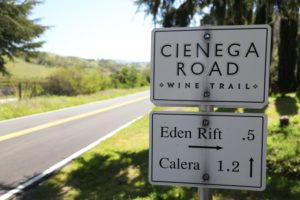 Theophile Vaché was born in France in 1814 and was from Orléans, a community located two hour drive south of Paris. Vaché was a wine merchant; according to the article, Eat, Drink, Savor: The spectacular 170 year old lineage of Cienega Valley Wine, published in Benito Link on April 18, 2021 by author Robert Eliason, his first trip to the U.S. was in 1840 to New Orleans. The same article referenced that for the next almost 10 years he continued to travel; he and his brother Adolphe arrived in San Francisco in 1849. They both moved to San Juan Bautista in 1850 (today about a 15 minute drive from Hollister); Theophile became a sheep rancher and his brother opened a bakery in Tuccoletta Hall, a building that is still standing on 3rd Street.
Theophile Vaché was born in France in 1814 and was from Orléans, a community located two hour drive south of Paris. Vaché was a wine merchant; according to the article, Eat, Drink, Savor: The spectacular 170 year old lineage of Cienega Valley Wine, published in Benito Link on April 18, 2021 by author Robert Eliason, his first trip to the U.S. was in 1840 to New Orleans. The same article referenced that for the next almost 10 years he continued to travel; he and his brother Adolphe arrived in San Francisco in 1849. They both moved to San Juan Bautista in 1850 (today about a 15 minute drive from Hollister); Theophile became a sheep rancher and his brother opened a bakery in Tuccoletta Hall, a building that is still standing on 3rd Street.
According to an article in the Hollister Free Lance dated Friday October 16, 1891, Theophile acquired 450 acres in 1852. His property was located on the San Andreas Faultline in what is now La Cienega AVA. The same article mentions he planted 35 acres of orchards and by 1883 had 35 acres of vines. Many of his grapevine cuttings were brought in from France. Another article in the Hollister Freelance dated Thursday July 19, 1923 mentions he built and founded his adobe winery in 1858. He was producing claret, a port-style wine, white wine and brandy. An article in the Hollister Freelance dated July 23, 1957 mentions Vaché would haul his wine in the early years to San Juan Bautista via a crudely built ox-cart.
Vaché sold his vineyard to German immigrant, banker and one time mayor of Hollister William Palmtag for $10,000 in 1883, moved back to France and died soon after while in a bathtub. After the transition in ownership, Palmtag significantly expanded the vineyard footprint. The property changed ownership a number of times after Palmtag sold it.
Theophile Vaché Adobe, San Juan Bautista
DeRose Winery
Eden Rift Vineyards
Parts of Theophile’s original holdings became DeRose Vineyards (still active) and the former Pietra Santa Winery. And since 2016, another part of his original property and neighbors to DeRose Winery is now the site of Eden Rift Vineyards, a 120 acre estate. But even more importantly, is both DeRose Vineyards and Eden Rift Vineyards are home to the longest continuously planted vineyards in the state of California (but not the oldest vines). The two properties were one until separated through ownership in 1985.
And in San Juan Bautista the one-story Theophile Vaché adobe still stands on the corner of 3rd and Washington streets; it was originally a two-story building. The building was constructed in 1851 and was used by Vaché to sell his wines and was known as the Vaché Wine Depot. In 1856 the building was used as a saloon. It has had numerous uses over the decades including as a Japanese Grocery in the 1890s, a real estate office, an art gallery and now is used for storage located next to the courtyard that houses guests for the restaurant, Jardines de San Juan.
While vineyards were being developed in northern California in the 1850s, the center of California’s wine industry was still Los Angeles and Rancho Cucamonga. Early vineyards were located in Burbank along the Los Angeles River and also in downtown Los Angeles on site of what is now the arts district. For reference, an excellent read is Los Angeles Wine: A History from the Mission Era to the Present by Stuart Douglass Byles.
In the fall of 1860 Theophile’s nephews and brothers Emile and Theophile Vaché founded Vaché Freres an importer and dealer in foreign and domestic wines, brandies, whiskies and vinegar. Their business was initially located at Alameda and Third streets in downtown Los Angeles and later was located on the southeast corner of Commercial and Los Angeles streets. Early in their business they tried to produce cream of tartar from wine crystals but it was not profitable.
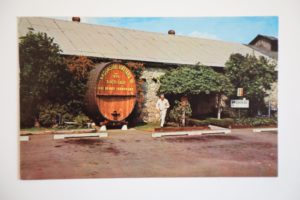 In 1882 Theophile’s nephews Emile, Theophile and Adolphe (all brothers) leased land in Redlands from a Dr. Benjamin Barton and made wine at Barton Winery. Theophile and Adolphe left the business soon after it was founded leaving Emile as the sole owner until 1902. Barton sold his property in 1886. The brothers had purchased 150 acres in San Timoteo Canyon in Redlands and in 1883 built an adobe and wooden winery on their property and called it Brookside Winery under the management of Vaché Freres. This site was located near the current location of Redlands Community Hospital slightly north and just opposite of the intersection of Fern Way and San Timoteo Canyon Boulevard. Several old barns and structures still remain, presumably built after the winery shut down, located next to a neighboring grove of citrus trees.
In 1882 Theophile’s nephews Emile, Theophile and Adolphe (all brothers) leased land in Redlands from a Dr. Benjamin Barton and made wine at Barton Winery. Theophile and Adolphe left the business soon after it was founded leaving Emile as the sole owner until 1902. Barton sold his property in 1886. The brothers had purchased 150 acres in San Timoteo Canyon in Redlands and in 1883 built an adobe and wooden winery on their property and called it Brookside Winery under the management of Vaché Freres. This site was located near the current location of Redlands Community Hospital slightly north and just opposite of the intersection of Fern Way and San Timoteo Canyon Boulevard. Several old barns and structures still remain, presumably built after the winery shut down, located next to a neighboring grove of citrus trees.
They continued to purchase grapes from the Barton Ranch and process them at the Brookside Winery. Other Brookside named places in Redlands include Brookside Avenue and Brookside Park and the former Brookside Dairy which in the 1980s became a shopping center.
In 1892 Theophile (the nephew of Theophile) retired from the wine business and moved back to France. An article dated Saturday June 7, 1924 in the Los Angeles Evening Express offering a look back at 60 years of Los Angeles history reported that Theophile was spending his remaining days living on the island of Saint-Georges-d’Oleron. According to an article in the San Juan Mission News dated Saturday March 9, 1918 he died in February of that year. Also in 1892 Marius Biane immigrated to California from the commune of Auch in southwestern France; in 1904 he married Adolphe’s daughter Marceline. Overseen by Biane, in 1902 Brookside Winery significantly expanded with the purchase of 4,000 acres from Segundo Guasti in Rancho Cucamonga. Brookside Winery in Redlands shut down in 1916.
Nine years after Brookside shut down, Tim’s great great great uncle and World War I veteran, Ernest Lewis “Tex” Vache played a single but very successful year for the Boston Red Sox in 1925 at age 36.
- Brookside Ave
- Brookside Park
- Brookside Park
- Brookside Park
- Brookside Ave
- Redlands Pride
- San Timoteo Canyon
- Fern Ave, Redlands
- Dr. Barton’s home
- Barton Way, Redlands
- Brookside, original site of Brookside Winery
- Old barn, former Brookside Winery property
The Biane heirs reestablished Brookside in 1952 in the Cucamonga Valley region of the Pomona Valley, and then moved locations four years later in 1956. Brookside continued to grow and expand including in 1969 when the company acquired Mills Winery in Sacramento. For reference, during the height of its vineyard plantings, Rancho Cucamonga was the largest grape growing region in the U.S. Over time, the vineyards were removed for urban development. Vestiges of old vineyards can still be seen in the region if one knows where to look. Flying into Ontario International Airport a few years back, we recall seeing a couple of straggly old vineyards in the area.
Some of Napa Valley’s wineries including Christian Brothers and Robert Mondavi would purchase bulk wine from Tim’s family to blend in their own wines. Tim still has a photo of himself with Robert Mondavi in Mondavi’s office at Robert Mondavi Winery dating dating from the late 1980s.
Brookside was once the largest wine producer in Southern California producing at its height, 3 million cases of wine a year and 150 different labels including one called Vaché in homage to the founding brothers. In the 1950s they were farming 1,200 acres of grapevines. By the late 1960s Brookside operated retail stores in California, Arizona and Illinois. A price list from 1968 shows a remarkable diversity in wines produced including wines from other fruits, from their estate, sparkling wines and additional products such as brandy, cooking wines, vinegars and wine jellies. In 1972 Brookside was purchased by Chicago based Beatrice Foods; 10 years later they sold all of its assets and by 1986 the winery ceased all operations.
Brookside Winery literature
Select Wines
Whites/Rosé
The 2022 Gen 7 The Seductress Chardonnay Central Coast (Paso Robles) was fermented in 90% stainless steel tanks and 10% French oak and then aged in primarily neutral French oak barrels. This wine is medium to deep gold in color; the bouquet is neither oaky nor buttery but offers a refreshing immediate floral tone including of honeysuckle and star jasmine. Additional scents include of apricot, yellow nectarines and peaches, pineapple, pineapple guava and golden delicious apples. The palate is a crisp expression of this variety featuring bright acidity and stone fruited flavors including peach, apricot and nectarine accompanied by ripe pear and pineapple guava. Lingers with a light saline character and note of white pepper. Pair with a white fish, perhaps rock cod. The name of the wine refers to, “a woman who tempts someone to do something or who sets out to allure or seduce someone”.
The GEN 7 Contortionist non vintage Rosé Sparkling California is a blend of 75% Pinot Noir and 25% Chardonnay from Lodi. It was made using the Charmat method. This uncomplicated and easy drinking wine is pale to medium pink in color; the sweetly fruited but delicate bouquet reveals aromas of cotton candy, wild strawberries (the white ones we often harvested as a child in our neighbor’s backyard), raspberries, and watermelon. Off dry and bordering on sweet, it’s residual sugar is tempered nicely by its bright acidity. The palate offers flavors of raspberry, red cherry, watermelon and strawberry. The lively finish lingers with a refreshing character and invites another sip – or as it is written on the back label, “gracefully twists and turns on your palate”. For best results, pair with a pool, good friends and a warm summer day.
Reds
For 2020 Tim wanted to purchase 3 tons of Pinot Noir but Beresini Vineyard only had two tons available. So the owner of the vineyard, Steve Beresini introduced Tim to one of his neighbors for an additional ton of grapes. Tim remembers harvesting at 24 brix (a bit higher than he normally is comfortable with) and then during fermentation the brix shot up to 27 degrees. He describes making this wine as, “holding on to the tiger’s tail”. It was racked twice and then after its barrel aging spent 2.5 years in bottle before being released.
The 2020 GEN 7 Pinot Noir Premium Reserve Black Dog Ranch/Beresini Vineyards; this wine was fermented whole cluster with the grapes harvested about a week prior to the LNU Lightning Complex fires in August. It is pale to medium ruby in color; the bouquet offers plenty of red fruits and holiday spices including clove and cardamom. The first thought triggered from smelling these spice aromas was of walking into Dr. Dick Petersen’s former Christmas tree barn on Darms Lane in Yountville during the winter holidays and enjoying a hot drink filled with similar spices. Additional fruit scents include cranberry, raspberry and red cherry. On the palate there are flavors of red cherry, red currant, raspberry and cranberry. Balanced but on the bolder side of the Pinot spectrum, this wine is easy to drink. The finish lingers with a light herbal note and a darker spice character including white pepper and dried tobacco leaf. In terms of food, we wouldn’t mind pairing this with grilled halibut.
The 2019 GEN 7 Kelly Family, Oak Knoll District Cabernet Sauvignon is medium to dark ruby in color; the bouquet is more red fruited than dark including scents of cherry, Santa Rosa plum, currant and cranberry. And there is a light herbal aromatic layer at play here including of dried sage and thyme. As the wine evolves, additional aromatics are expressed including a light assortment of baking spices and a hint of mocha. The juicy and flavorful palate reveals notes of red cherry, cranberry, red plum, currant and finishes with dried herbs. Superbly balanced, this bottling is saddled perfectly between flavor, bright acidity and an approachable texture. The tannins are polished and parallel the fruit with a light gravelly texture. The finish sparkles with acidity and its red fruits. This wine drinks well by itself but would pair well with lighter BBQ meats such as pork shoulder or lamb.
The 2017 GEN 7 Cabernet Sauvignon Reserve, Napa Valley was sourced from several vineyards in St. Helena. This wine is medium to dark ruby in color; the first aromatic hit we noted was of plum. Other scents include dark raspberry, red cherries, library book and suede. The palate is more red fruited than dark and includes flavors of cherry, plum, raspberry and currant. For reference, we tasted this wine 8 years post vintage; it is fresh and youthful and in a blind tasting we most likely would have identified it as slightly younger than its actual vintage. The finish lingers with gravely tannins, a persistent note of dust and a light drying character. Features a balanced acidity. No heavy, dense, black-fruited Cabernet Sauvignon, meal in a glass here. This is very much a food friendly bottling; we would love this with BBQ pork ribs covered in a spicy dry rub.
The 2019 GEN 7 Cabernet Sauvignon Reserve Napa Valley was sourced from the same vineyards in St. Helena as the 2017 vintage. This wine is dark ruby; the elegant bouquet is red fruited with aromas of currant, cranberry, raspberry and a touch of mocha and vanilla as the wine further opens. The aromatic focus is on the fruit with the oak providing a light complementary influence. On the palate there are red fruited flavors including cherry, currant and raspberry, with a light and lingering red-fruited finish. The gravely and grainy tannins persist beyond the fruit on extended finish. Like the 2017 this wine is approachable in its youth and highly versatile in terms of food pairing.
The 2019 Vaché Cabernet Sauvignon Premium Reserve, St. Helena Napa Valley is only a two barrel production. This wine is deep ruby in color; the elegant bouquet offers a captivating union of both red fruits and some herbal influences. These scents include dried rose petal, violets, lilac, lavender, red cherry, currant, dark raspberry and a light layer of Shishito/Jalapeno pepper. Like the bouquet, the palate is also red fruited with some herbal notes. It sports flavors of red cherry, currant, raspberry and Santa Rosa plum with a persistent red chili spice character. The tannins offer a moderate, grainy and long lasting grip, ultimately outpacing the fruit. And a continuing drying character. Fresh and lively, this wine has loads of life ahead of it with the proper cellaring. In terms of a pairing, this wine has BBQ written all over it – perhaps a well marbled cut of Wagyu steak. Texas enthusiasts of more robust Napa Valley red wines who enjoy steak will gravitate towards this bottling.
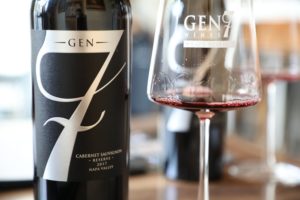
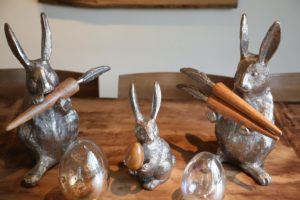 The 2018 Vaché Négrette, La Cienega Valley (San Benito County) is a double barrel production from dry farmed old vines. This wine is dark ruby and nearly opaque in the glass; the bouquet offers a highly fruity and open-knitted aromatic expression. Its scents are of plum jam, blackberry, boysenberry and dark cherry with some floral undertones including violets and lavender and a note of dark cocoa powder. But the fruit is clearly the star of the show here. On the palate there are flavors of plum, dark cherry, dark raspberry, and blackberry accompanied by a savory and meaty finishing component. The tannins are rounded with a gravelly texture and outlast the fruit on the finish. They feel dense perhaps accentuated by the intensity of the fruit. This wine is fresh and lively, 7 years post vintage. Due to its varietal character, GEN 7 always ages this wine in barrel for approximately 3 years before it is bottled. For reference, Négrette is a red variety native to the southwest part of France.
The 2018 Vaché Négrette, La Cienega Valley (San Benito County) is a double barrel production from dry farmed old vines. This wine is dark ruby and nearly opaque in the glass; the bouquet offers a highly fruity and open-knitted aromatic expression. Its scents are of plum jam, blackberry, boysenberry and dark cherry with some floral undertones including violets and lavender and a note of dark cocoa powder. But the fruit is clearly the star of the show here. On the palate there are flavors of plum, dark cherry, dark raspberry, and blackberry accompanied by a savory and meaty finishing component. The tannins are rounded with a gravelly texture and outlast the fruit on the finish. They feel dense perhaps accentuated by the intensity of the fruit. This wine is fresh and lively, 7 years post vintage. Due to its varietal character, GEN 7 always ages this wine in barrel for approximately 3 years before it is bottled. For reference, Négrette is a red variety native to the southwest part of France.
The GEN 7 Noir de Noir Red Wine, California proprietary red sweet wine is a refreshing 11% alcohol. The sweetly fruited bouquet immediately reminded us of Welch’s grape juice, freshly squeeze Concord grape juice, blackberry jam, grape soda and assorted dried red berries. Perhaps a layer of bubble gum to; it is very ‘candy-like’. Intense and distinctive. The palate is remarkably sweet, sports a creamy mouth feel and a both a sweet and a long-lasting tangy finish. Grapey across the palate it offers flavors of Concord grapes, grape soda, blueberry, and purple rimming sugar. Its residual sugar is quite high. This is a wine you will either love or dislike.
And in homage to sherry a great great uncle produced the late 1800s, Tim also produces a sherry bottled under GEN 7. In 2018 he read an advertisement by Roger King, a grower in Suisun Valley requesting someone to partner with to graft other varieties onto an existing vineyard of old Syrah. Tim reached out to King and suggested he graft Mission grapes, Palomino and Pedro Jimenez. King agreed. From these varieties Tim produces a sweet Sherry which was released for the first time in late 2025.
Barrel Tastings
In 2018, Tim attended a cooperage tasting and met 4th generation cooper from France, Mathieu Maury. He remembers the event showcased approximately 25 wines from Bordeaux and Burgundy aged in barrels from Tonnellerie Maury. The elegance and textural approachability contributed by these barrels caught his attention. Oak from this cooperage complements the GEN 7 style of wines very well.
The following wines were tasted exclusively from barrel.
The 2022 GEN 7 Vaché Proprietary Red Blend is a Merlot dominated blend crafted from old vines in Knights Valley, Cabernet Sauvignon from St. Helena and Négrette from San Benito County. Every year they walk their Merlot source vineyard, taste the grapes and invariably always select the same three rows; one row for its bright acidity and the other two rows for their forward expression of fruit. They are in good company at this vineyard; Duckhorn also purchases grapes for one of their Merlot bottlings. For reference, we tasted this soon after the final blend was created. This wine is deep ruby; on the bouquet there are aromas of raspberry, red plum, red cherries and a very subtle hint of sage. The red-fruited brightness is immediatley evident on the nose. Already balanced, the palate reveals more red fruit than dark. These flavors include raspberry and red cherry. Finishes bright, balanced and has a cadence that immediatley begs another sip. This wine straddles approachability and age ability well. The tannins are remarkably rounded and resolved at this early age; their texture seamless fits into the supple finish like a perfectly aligned puzzle piece. This is the inaugural vintage of this special bottling. Only 143 cases were produced.
The 2023 GEN 7 Pinot Noir was entirely from Beresini Vineyard. This wine is medium ruby; the nose is distinctly brighter than the 2020 vintage, an attribute which Tim always strives for from this variety in particular. It is more Burgundian in style. The red fruited bouquet offers scents of raspberry, red cherry and red plum with an assorted light touch of baking baking spices including cinnamon, nutmeg and cardamon. The palate is fresh, balanced and flavorful, pulling everything you want from this variety including a diversity of flavor, brightness and spice notes. Flavors include raspberry, red plum skin and white pepper. Its mouth feel is lightly creamy with a rounded and supple texture.
The 2022 GEN 7 St. Helena Cabernet Sauvignon was sourced from two vineyards; we tasted it before its final blend when it was 100% varietal. This wine will be blended with small amounts of Petit Verdot, Négrette and Coombsville Cabernet Sauvignon. This wine is deep ruby; the immediate aroma we noted was of ripe Santa Rosa plums with plenty of other fruit layers including cherry, blackberry and dark raspberry accompanied by a hint of mocha, toasted cedar and Graham cracker. A mouth full of cherries and plums, this balanced beauty continues to give in terms of fruit on the finish. Its a union of both red and darker fruits including blackberry, dark raspberry and Persian mulberry. The tannins are lightly gravelly and already seamlessly fitting. The addition of both the Petit Verdot and Negrette should add some textural ‘oomph’ to the wine. This is a lighter styled wine from this variety; drink early and enjoy. The texture is perhaps representative of the vintage. The Cabernet Sauvignon was harvested about 5 weeks following the extreme heat spike centered around Labor Day of that year; their total yields were off by about 60%.
The GEN 7 Port is aged in 100% French oak barrels. The first vintage of this was from 2022; this will eventually be the base for a Solera style Port-style wine. All the grapes that turned into raisins that year were salvaged from a vineyard in St. Helena and were used for this wine. The condition of the grapes ‘told’ them what type of wine to make; their goal is to produce a wine in balance, has restraint in terms of residual sugar and isn’t perceived as ‘hot’ from the alcohol. This wine is deep ruby and opaque; generous on the bouquet it offers scents of fig jam, raspberry and plum jam. The nose showcases a sweetness of fruit and a ripeness but is in no way over ripe. The bouquet smells like walking into a winery during early stages of fermentation where the grapes smell sweet. It is balanced and bright from its acidity; this tempers the sweetness perfectly. The palate tastes like cherry, ripe raspberry and red plums. Finishes sweet, bright and with lightly grainy tannins that persist in tandem with fruit on the long finish. And a light note of dried tobacco leaf. This wine is dangerously drinkable right from the barrel.
Tasting Room, The Village at The Grand Reserve Lawn
The inception of a tasting room was based on an introduction that Duffy Keyes, the proprietor of B Cellars made for Tim to Tim Busch the proprietor of Trinitas Cellars; Busch then introduced Tim to his son Garrett. Both Tim and Garrett met and Garrett outlined plans for a new resort they would be building including a ‘wine village’. The Busch’s liked both Tim’s story and his wines and invited GEN 7 to join their community.
In summer of 2018 the Busch family opened a large resort on land directly to the south and across the street from the Meritage Resort; it was known as Vista Collina Resort along with the neighboring, The Village at Vista Collina Resort. In late 2022 Vista Collina was renamed to The Grand Reserve at the Meritage. The neighboring space now known as The Village at The Grand Reserve Lawn features a large green space (with environmentally friendly turf) and three tasting rooms including GEN 7 Wines, Trinitas Cellars (the brand owned by the Meritage), and Anarchist Wine Company, the brand produced by the Napa based winery, The Wine Foundry.
The grand opening celebration of this space was held on August 4, 2018 and at the time featured 9 tasting rooms, a number which tied in well with the Trinitas theme, as being divisible by three. Nine tasting rooms ultimately proved to be too many for this space and Cornerstone Cellars, Jayson by Pahlmeyer, Mi Sueño Winery and Napa Smith Brewery have all since moved out of their respective spaces. GEN 7 was the family’s first winery retail space since Brookside Winery closed in 1980s. Tim remembers working in the tasting room for for 92 days to learn the ins and outs of pouring wine and retail sales direct to consumer.
The vivid and colorful artwork on the walls are permanent, by Lisa Cook, an artist from Lake Arrowhead, CA. Tim and his wife walked into an artists co-op during a visit to Lake Arrowhead and quickly spotted Lisa’s engaging paintings. They thought some of her paintings would make great labels, and initially asked to use images for labels, but ultimately they purchased the original artwork. And two of the paintings used for their labels hang in the tasting room including Contortionist and Seductress.
Concerts are held on the lawn immediately outside of the tasting room. Certain wines do better here in terms of tastings and sales during the summer concerts, namely their sparkling and Noir de Noir sweet wine.
Plenty of parking is located across the street in the parking lots that surround The Meritage Resort or visitors to the property often find spaces, curbside on the street that runs in front of The Village. The ‘lawn’ area is ideal for hosting a variety of events including concerts. Umbrellas inserted into the ground can easily be moved and seating arrangements are highly flexible.
—
And GEN 7 is not to be confused with G7 wines produced by 7 generation vintners Viña del Pedregal S.A. in Chile. Total production varies depending on the vintage, but is usually around 1,800 cases annually. For more information, to purchase wine or to schedule a tasting, visit: www.gen7wines.com

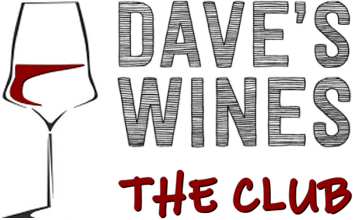





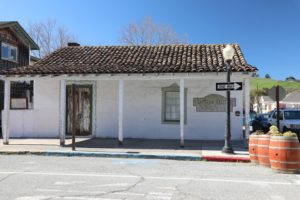
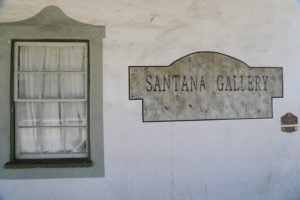
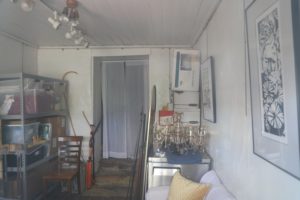
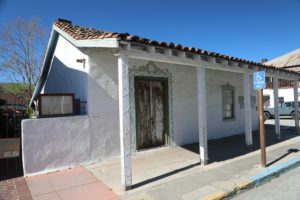
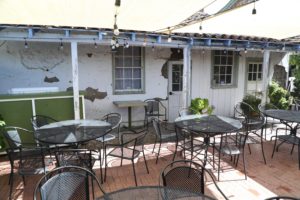
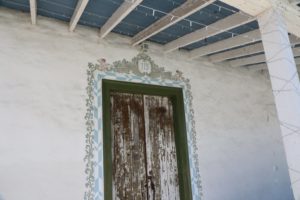
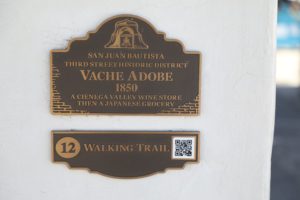
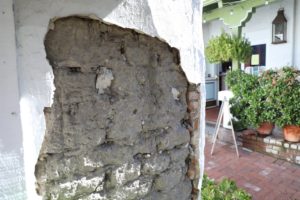
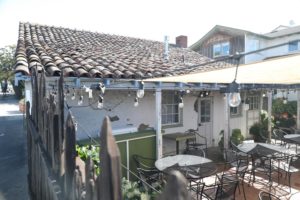
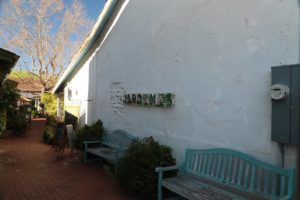
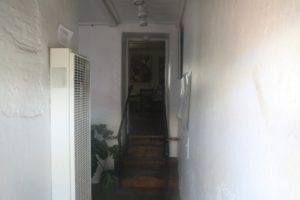
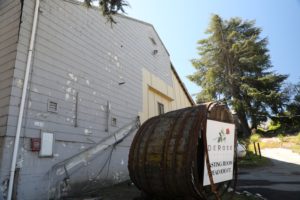
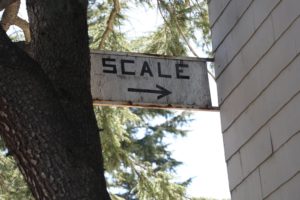
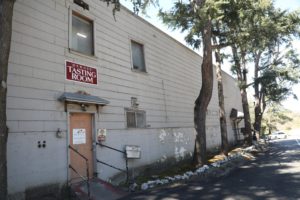
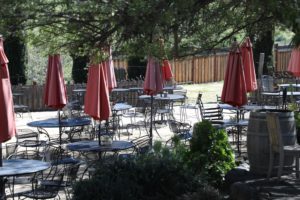
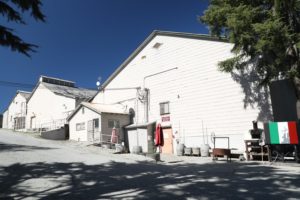
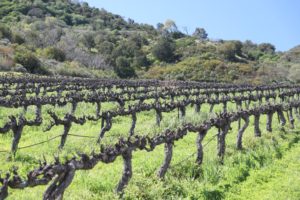
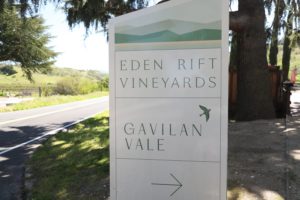
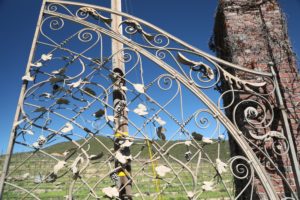
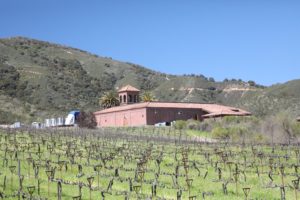
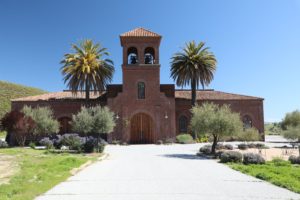
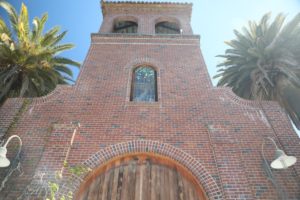
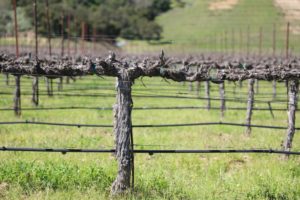

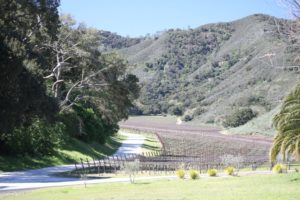
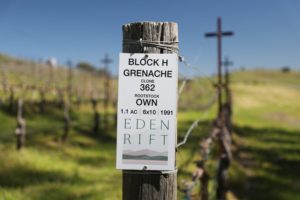
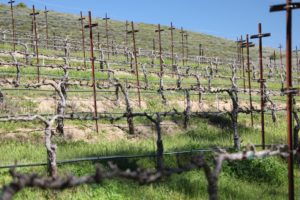
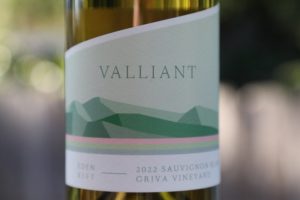
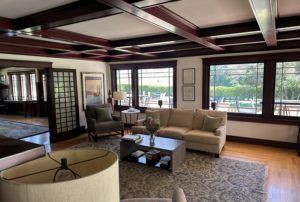
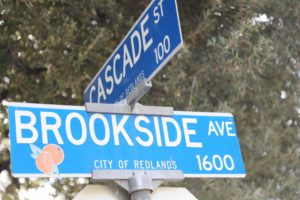
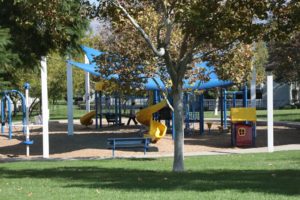
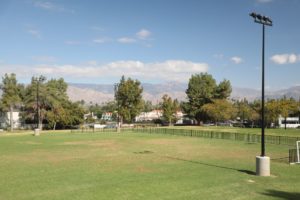
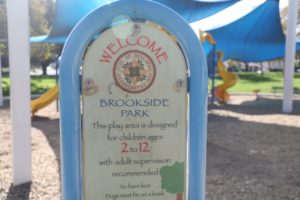
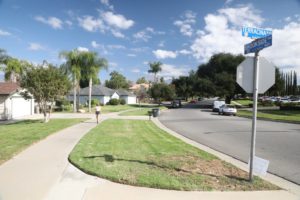
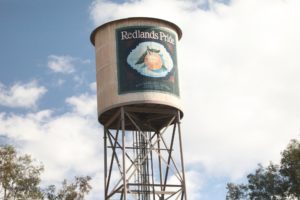
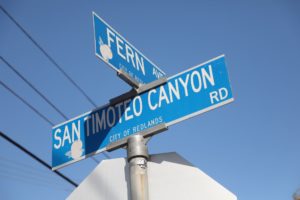
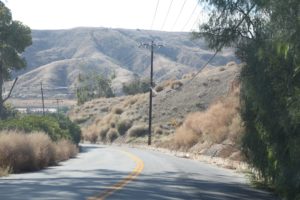
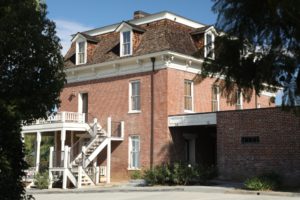
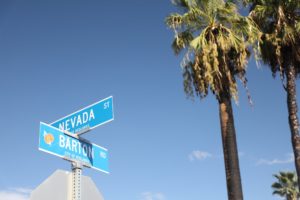

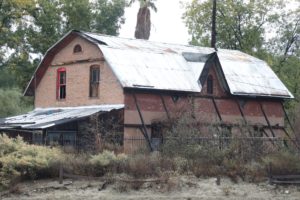
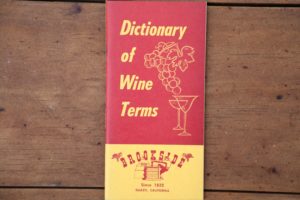
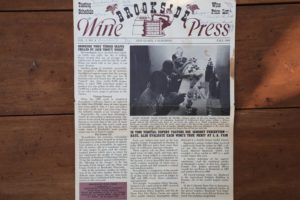
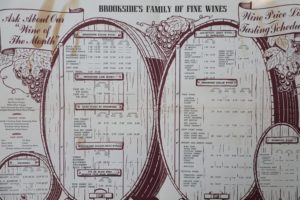
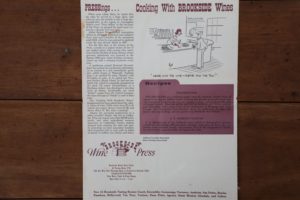
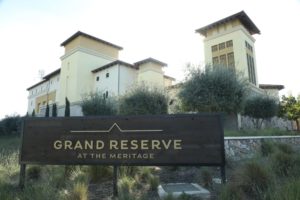
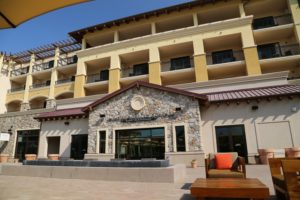
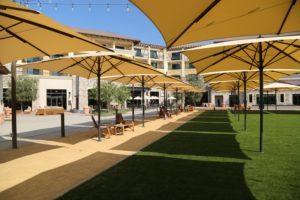
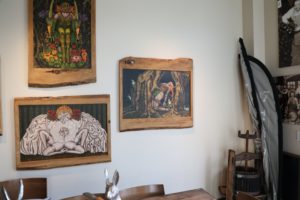
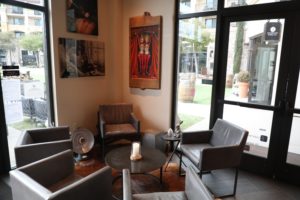
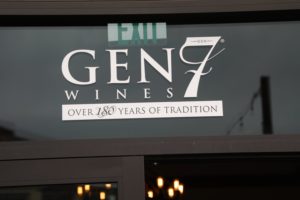
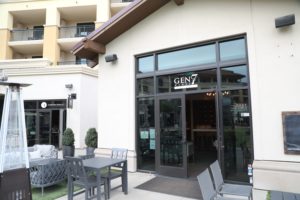
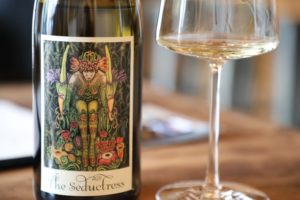
Leave a Reply